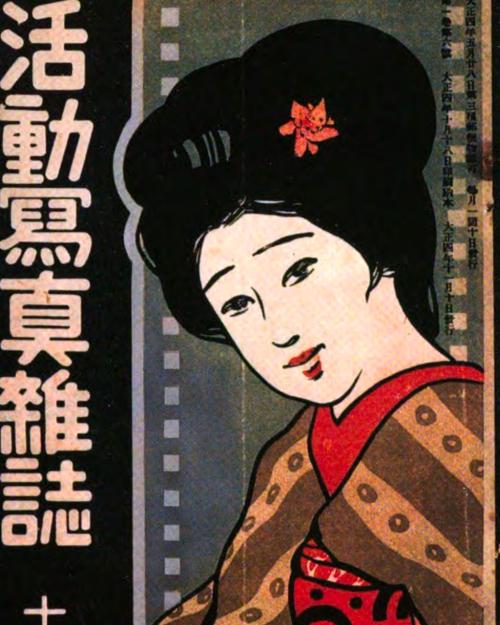As soon as a new media technology emerges – for instance ChatGPT or a virtual reality headset – a discourse starts up, as enthusiasts expound on its uses while skeptics write op-eds about perceived threats.
“We’re in an era where it seems that new media and media technologies that kind of freak us out emerge constantly,” said Andrew Campana, assistant professor of Asian studies in the College of Arts and Sciences and a literature and media scholar. “It’s important to remember that this is not a new story. Humans have been grappling with this for a long time, and capturing that unsettling feeling is something poetry is really good at.”
In new research, Campana examines cinema-centered poetry in Japan from the 1910s and 1920s, discovering the ways poetry chronicles lasting human impressions left by “new” media–especially in a century when the “new” doesn’t stick around for long. His article “Projected on the Dusk: Seeking Cinema in 1910s and 1920s Japanese Poetry” published in Literature in March.
Japanese poets such as Kitahara Hakushu and Okayama Higashi engaged with early cinema in their work, capturing ageless truths about human reactions to new media, Campana argues.
“These were modernist and proto-modernist experiments in imagination and sensation themselves,” Campana writes. “Within poetry we can find articulations…that were often too small, strange, abstract or unsystematic to be easily found in fiction, philosophy or even film. These works have value as an underexplored reservoir of thought about cinema and mediation more generally. These works have media archaeological value, capturing obsolete technologies and capturing early cinematic sensation within and beyond movie houses.”
Kitahara, for example, in the 1911 poem “Shadows,” references cinematic technology and uses it as a metaphor for memory and the passage of time, Campana points out: “Sorrow/All of it, a pale flicker of the cinema/Projected on the dusk,/That restless and mysterious film.”
The lobby of a movie theater, not film itself, provides the setting for Okayama’s 1923 poem “Inside an Elegant Motion Picture Theater,” Campana writes: “For him the most important cinematic experience was not in the screening itself, but the time before it. The lack of projected images was what allowed his daydream to flourish unimpeded, until he is suddenly faced with reality again.”
“Projected on the Dusk” previews Campana’s forthcoming book (fall 2024), “Expanding Verse: Japanese Poetry at Media’s Edge,” which examines how Japanese poets in different eras connected to the new media of their time, from cinema of the 1920s to disability rights activists in the age of mass media, all the way up to augmented reality in the present.
In addition to his paper in Literature, Campana recently published a chapter of his completed book in Positions Asia Critique. “You Forbid Me to Walk: Yokota Hiroshi’s Disability Poetics” explores the poetry of Yokota Hiroshi, a leader in the disability rights movement that emerged in Japan in the 1960s and 1970s. Campana shows how Yokota’s writing interacted with the dominant mass media of his time.
Yokota reacted to (often against) mass media depictions of disabled people and staged actions that attracted media attention, writes Campana.
“These poets became more like disability rights activists,” Campana said. “They wouldn’t just say, ‘this train station is inaccessible;’ they’d crawl out of their wheelchairs and sit on the steps, saying, ‘look how inaccessible this is to us. Yokota wouldn’t just write poetry and publish it, he would go to plazas and sit on the ground as a person with cerebral palsy and read his poetry out loud. These direct actions pushed against the idea of what a thinker is, what a poet is.”







